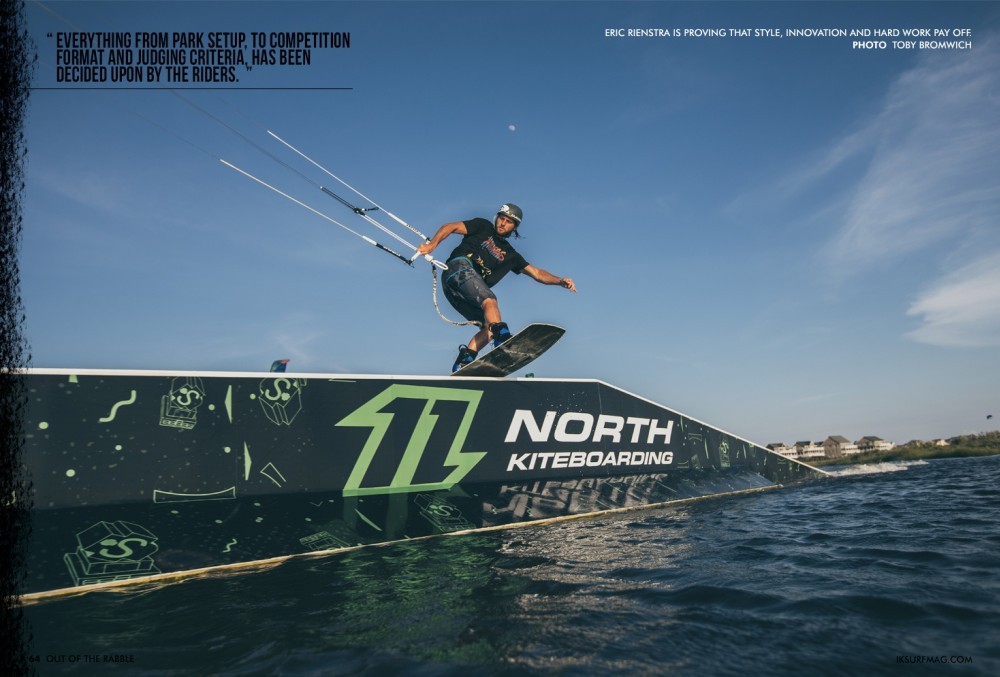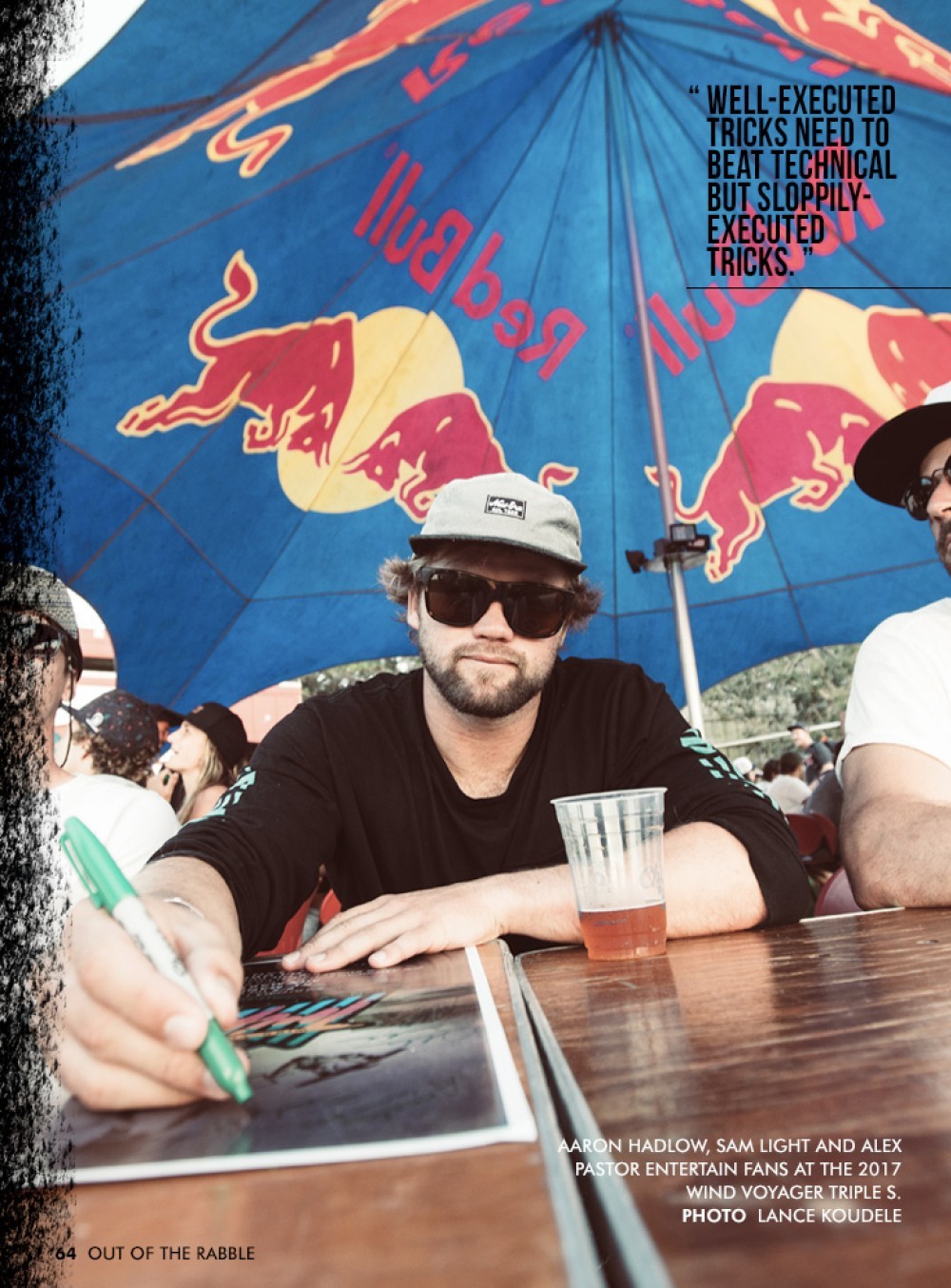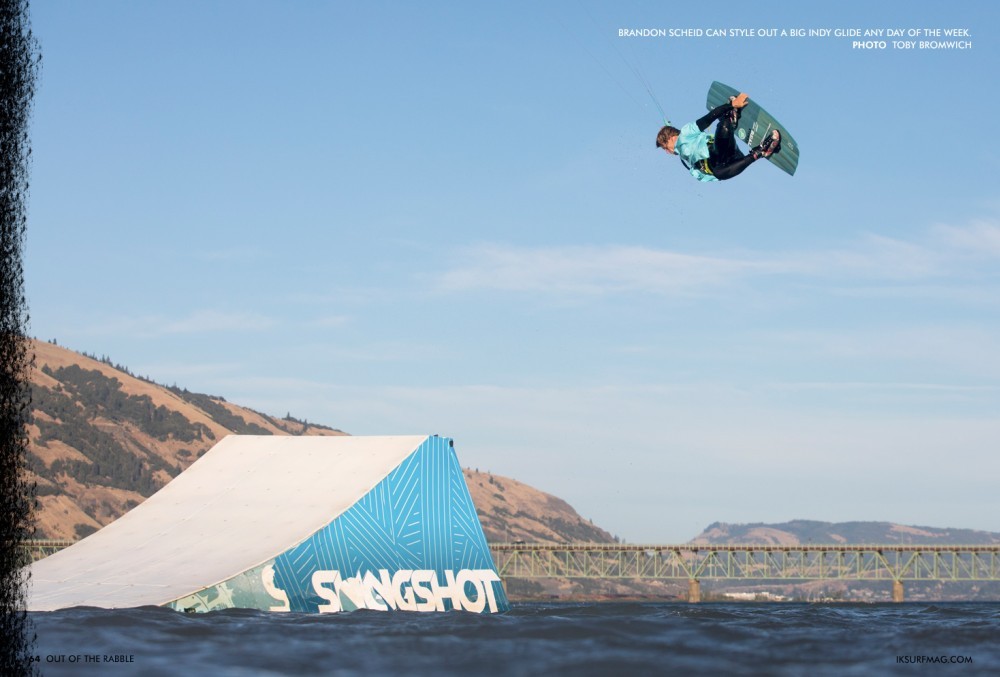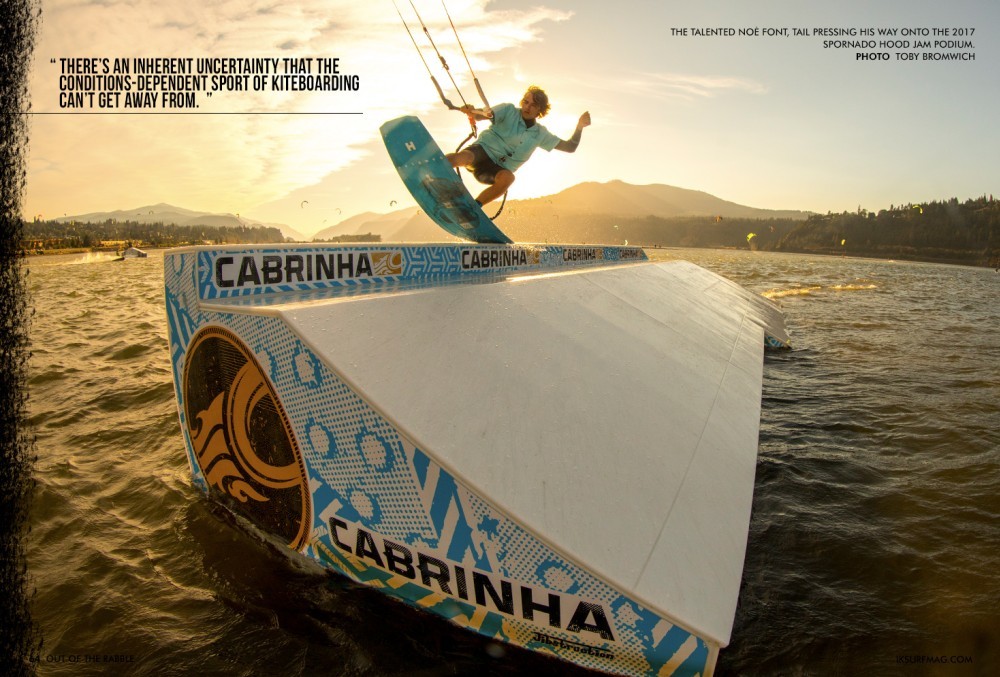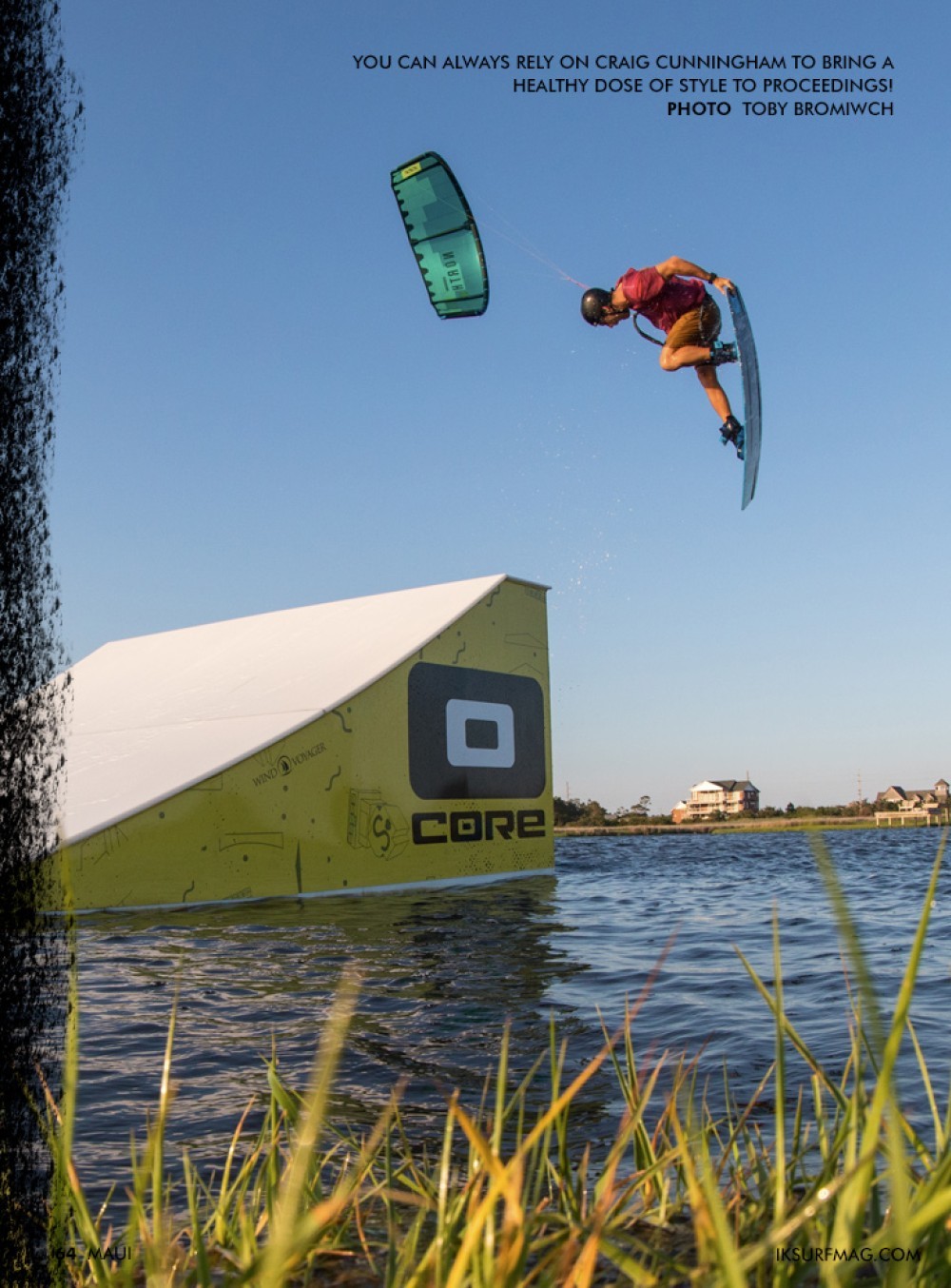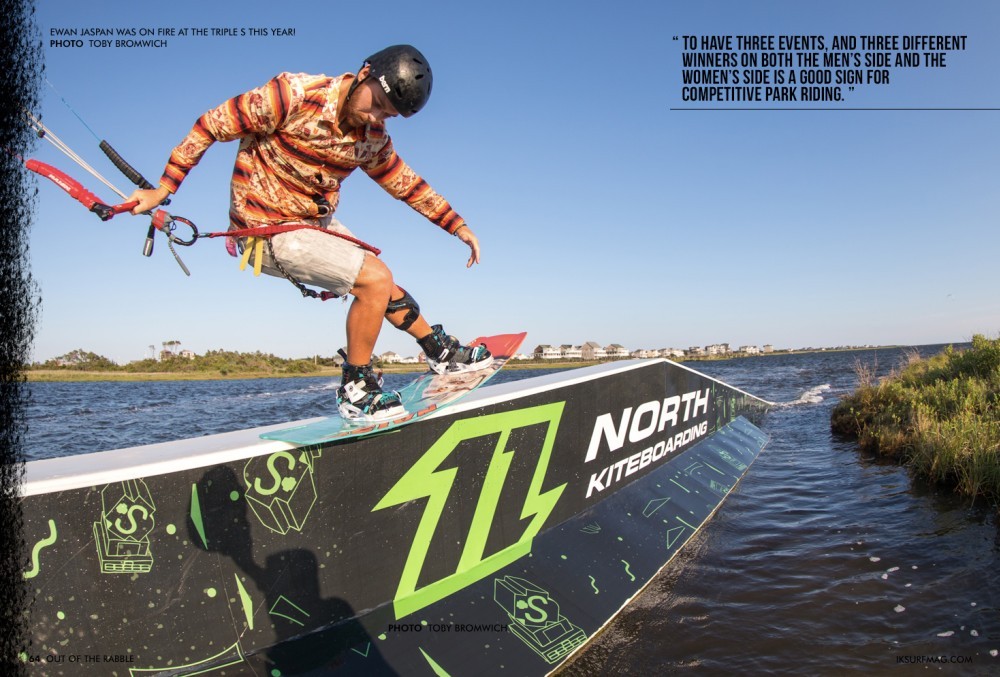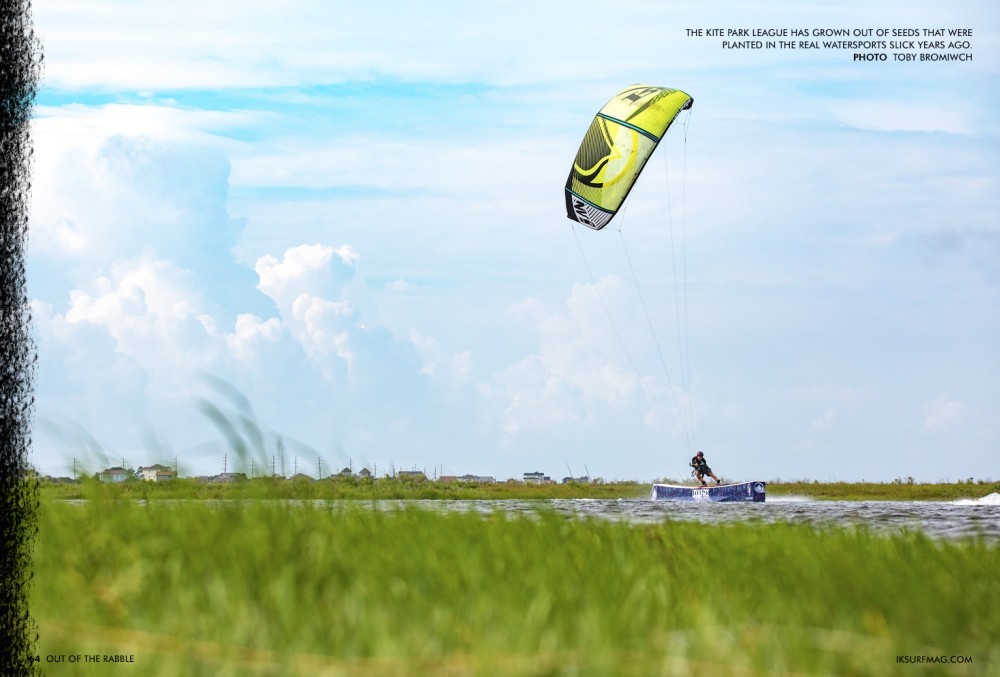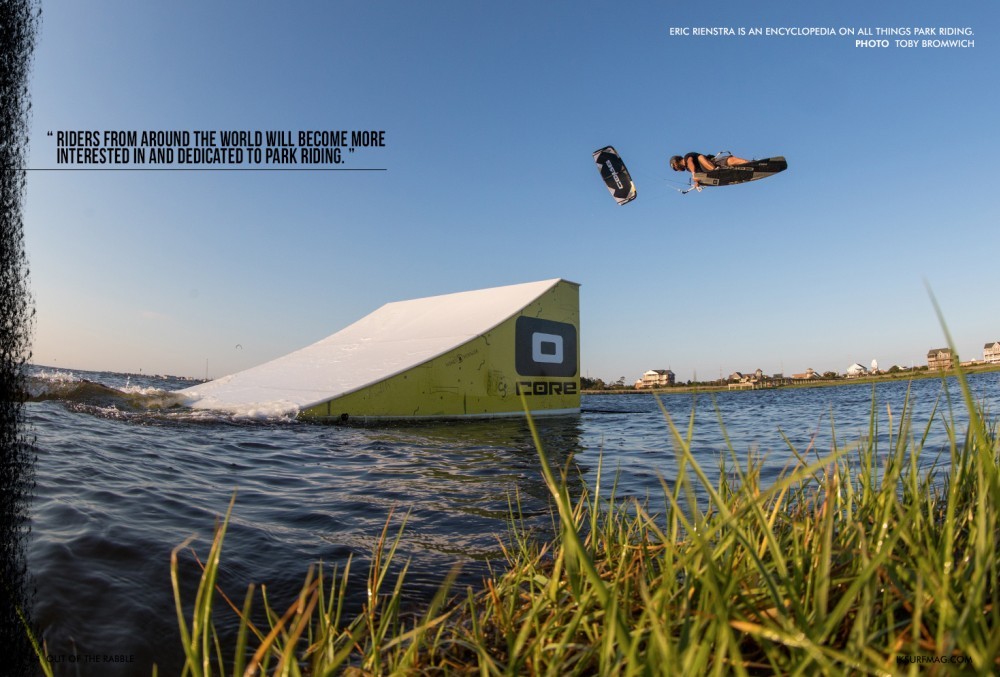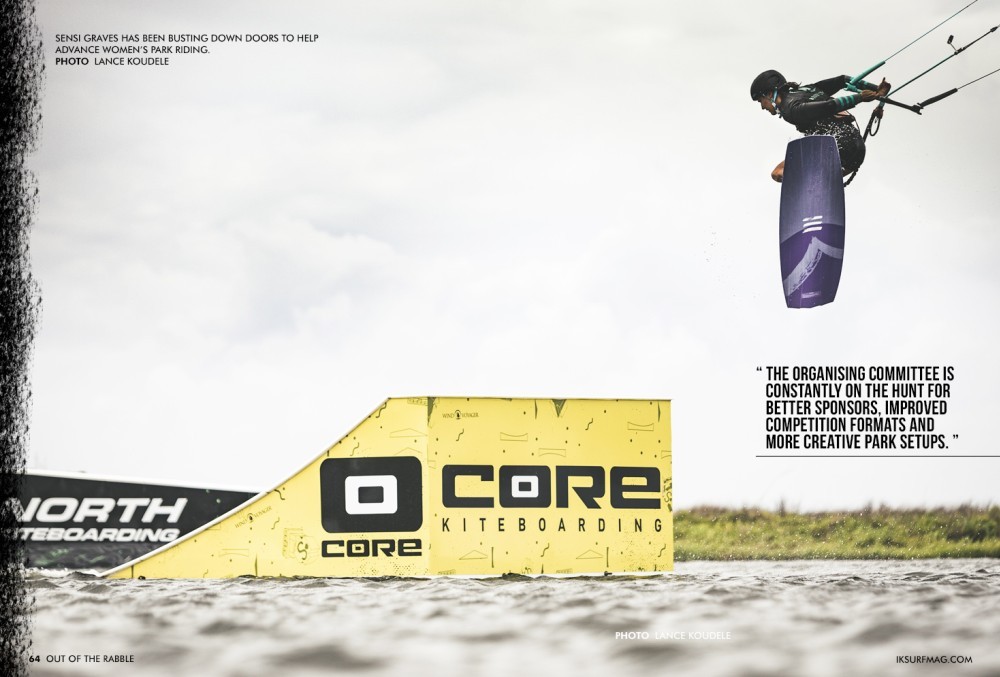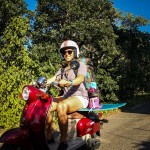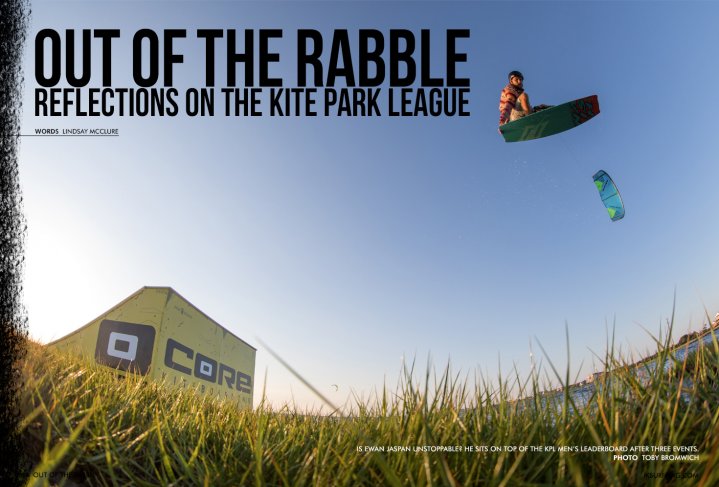
Out Of The Rabble
Issue 64 / Wed 9th Aug, 2017
The Kite Park League is having huge success as the best tour on the planet right now for pro riders. At the top, the gap has closed, and everything is to play for, this year's result is going to go right down to the wire!
A few years back, the top park kiteboarders decided that they were dissatisfied with the rate that park riding was progressing. They wanted to help build more parks around the world, to encourage more contests, to unify the competition format and to create a world tour, so they formed the Kite Park League. Riders such as Eric Rienstra, Brandon Scheid, Colleen Carroll, Tom Court, Craig Cunningham and Sam Light have been the backbone of the league.
By uniting each event and crowning a world champion, riders have a goal to work toward throughout the year, and fans have clear contests and rankings to follow. The KPL members carefully follow wakeboarding, skateboarding, snowboarding and surfing, modelling their riding style, contest formats and tour development after the board sports that have paved the way for kiteboarding.
The league has been rider-driven from the start, and it has been impressive to see the riders work through ideas to come to a consensus on a broad range of issues. As Brandon Scheid emphasised at the 2017 Spornado Hood Jam, the rabble — heated debate — has always played a major role in the development of the KPL. Everything from park setup, to competition format and judging criteria, has been decided upon by the riders.
As you can imagine, not every rider always shares the same opinion on every point. In these instances voices get louder, arms start windmilling around, and cheeks get red. Although this may seem absurd, these productive debates have kept the state of kite-powered park riding fresh and innovative. The riders truly have the best interest of the sport of kiteboarding in mind as they make decisions about KPL events.
One of the most important aspects of each contest, and one of the biggest areas of reform has been the judging. Members of the Kite Park League have been very adamant about the type of tricks and the style of riding that they want to see winning contests. The key is that well-executed tricks need to beat technical but sloppily-executed tricks. While everyone agrees that they want the tricks that look good to win contests, it’s a complicated order for the judges.
The KPL started with a list of all the tricks that might be performed in an event, complete with additions for grabs, amplitude and style, and subtractions for sloppy landings, pre spin and generally poor execution. They then assigned a point value to each trick and passed the list around so that the riders could plan their heats accordingly.
Currently, judges are moving toward scoring based on difficulty and execution of tricks compared with the other performances in the heat. This format has a few benefits, as judges can focus on ranking tricks that are performed side-by-side.
Let’s rewind to the original Hood Jam in 2015. In 2015, the media team, with help from the riders, recorded on video every kicker and slider hit of the competition. On the final night of the contest, every rider was given a score sheet. The competitors then watched through all the footage and judged each of their fellow riders. A lively debate sparked about a few difficult situations to score. For example, what constitutes a clean landing? What if a rider grabs the loop instead of the bar, or rides for a while after the feature and then crashes his or her kite? What if the wingtip sweeps the water, but the kite doesn’t fully crash? What if a rider lands in blind and then pops out instead of passing the bar? What if a rider does a fully submerged cannon ball into the water, but maintains a grip on the bar, pops out of the water and rides away?
At the 2015 Hood Jam, each rider was able to make up his or her mind about the scoring. Since then, the KPL has moved on to hire knowledgeable judges, including KPL head judge Alexander Lewis-Hughes. Depending on the event, joining Lewis-Hughes on the judging panel are former competitors, wakeboarding judges or, as was the case with Peair Legov at the 2017 Spornado Hood Jam, a current rider who is on the sideline due to injury.
There’s an inherent uncertainty that the conditions-dependent sport of kiteboarding can’t get away from. Because of this, there are always last-minute decisions to be made. In situations like this, the KPL goes back to its roots and throws the question out at the rider’s meeting, giving everyone a voice in how to proceed. Although the ultimate say in these situations has been passed over to the judging panel, the riders are still an integral part of the equation.
So, how has all this discourse affected the level of riding? It’s getting tight at the top. The 2017 Kite Park League World Tour started in January at the Solaire Blue Palawan Open in the Philippines. Winning in the Philippines were Sam Light for the men and Annelous Lammerts for the women. The second stop on the 2017 KPL was at the Wind Voyager Triple S in North Carolina. The 2017 Wind Voyager Triple S champions were Ewan Jaspan and Colleen Carroll. Next up for the KPL was the 2017 Spornado Hood Jam, where Brandon Scheid and Karolina Winkowska took the top honours. To have three events, and three different winners on both the men’s side and the women’s side is a good sign for competitive park riding. In the past, a couple of riders have dominated the scene. Now, it’s anyone’s game.
Riders are taking each event more seriously because they have more incentive to place consistently at the top as they eye the overall tour championship. To determine the 2017 KPL Champion, each rider’s ranking will be calculated using his or her three best finishes. Stay tuned, because the Kick n Slide event in Turkey early in September and the Rhosneigr Park Jam in the U.K. at the beginning of October are sure to be exciting! Last year only a few of the top riders made the effort to travel to the UK, but with the title well and truly up for grabs, we could see a full house of the world’s best park riders as the event goes down to the wire!
Another major goal of the KPL is to develop more kite parks around the world. Building a park, even with just a couple features, is a massive undertaking. Features are expensive to build, difficult to transport, need care when they’re in the water, often require permits and at many beaches, they can’t be left in the water permanently.
Because of these factors, it takes a committed local community to build and manage a kite park. The Slider Project set up in Hood River, OR holds a permit for five features that can be left in the water throughout the summer season. To maintain a park of this size, the Slider Project has put significant efforts into fundraising. Also, throughout the season, the features often need to be repaired and rearranged, projects that require a lot of strong and willing bodies to help.
The Slider Project in Hood River has been a blueprint for newer parks that are being built around the world. The park at the Blue Palawan in the Philippines opened in January of 2016, and it now has three features. A new park in Turkey at Urla Surf House is bringing in used features from the nearby Hypnotics cable park. Also, local beaches all over the world are adding a feature or two to the water. With more park riding options around the world, it’s the hope of the KPL that riders from around the world will become more interested in and dedicated to park riding.
The future of the KPL looks bright. The core organisers are motivated to keep improving every aspect of the tour. These riders won’t let the momentum they’ve initiated hit a plateau. Instead, the organising committee is constantly on the hunt for better sponsors, improved competition formats and more creative park setups. They want to bring more talented and dedicated riders into the fold, and they want to make it easier for these riders to compete on every stop of the tour.
If the KPL has you feeling inspired to try park riding for the first time, take off your fins, put a helmet on your head, watch a video tutorial or ask a friend for some pointers, then give it a try!
Videos
By Lindsay McClure
Lindsay is a pro rider from Hood River in the USA, she works for IKSURFMAG as our Features Editor and is an integral part of the team. Lindsay is really into wakestyle riding and can be found in the Hood River Slider Park during the summer months, she also travels all over the world with the World Class Academy helping younger riders develop through kiteboarding!




